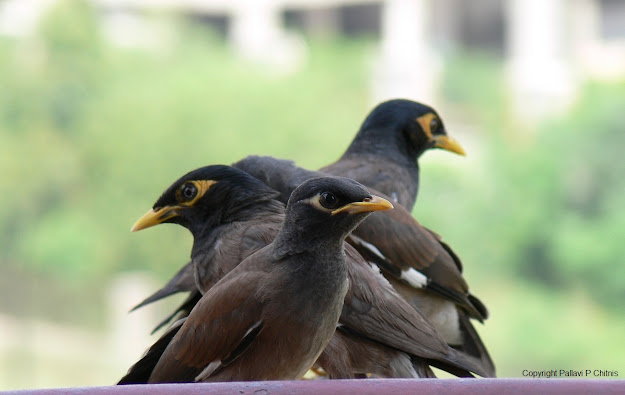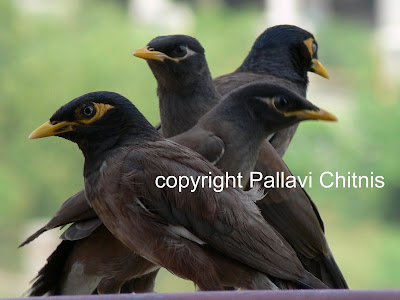The 2010 winter session of Indian parliament was a no show. No new policies or laws were passed, as the opposition parties wanted investigations into the 2G scam by a JPC. Walkouts, protests and disruptions were highlights in the drama of the Indian legislative assembly.
No, this blog hasn't deviated from avian life to humans and their politics. While our elected representatives were not doing their assigned jobs, other parliaments were in session in avian world; that of the owls. A collective of owls, also known as a parliament, is most active during the winters, which is their breeding season. The usually silent predators are more vocal; with mates calling out to each other and young ones demanding food from their parents.
Owl, a nocturnal bird, is often associated with misfortunes, black magic, evil, and conversely with intelligence by humans. Owl is also known as the vehicle of goddess Lakshmi in the Indian mythology. Fear of the dark and unknown, prominent at night, and deep rooted in the human psyche, has perhaps resulted in such conceptions.
Is this the reason why the same term has been coined for a collective of owls and that of politicians? :)
The call of the owl can sound very eerie in the dark, misty winter nights. The first time I heard an owl near my home, it sounded like someone was snoring loudly. Most residents of our housing society were annoyed by the continuous calls, which would start in the evenings and stop just before sunrise. Since no one could see the source of the sound, many theories were put forward to explain these winter happening. Some said it was bats hunting at night. Others proposed that it was probably a kite perched on high rise, protesting its discomfort in the cold weather. Mystery was unraveled one evening when someone standing in the 9th floor balcony saw the owls flying around.
 |
| Blurred photo of Barn Owl on our AC |
The birds residing near our building were the barn owls, which are widespread residents in the Indian subcontinent. They can be found near human habitation and cultivated areas. They are very effective in controlling pests like mice. They also prey upon small birds, rats and insects.
One night a barn owl landed on our bedroom AC, where a pigeon family had made a nest. The owl sought a wholesome meal of freshly laid pigeon eggs. No sound came from the owl, but the pigeons made a lot of noise, which awoke me and my sister. We could see the owl from our balcony, as it waited patiently for the pigeons to leave their nest. Tried to click a photograph, however absence of a stand and darkness came in way of a good picture. Next morning, there was no sign of the pigeon nest abut remains of the owls meal were strewn on the window ledge below.
Another type, the Spotted Owlet is resident in my mother's school building. This bird breaks its nocturnal habit during winters. The spotted owlets are heard chattering or seen enjoying the warm winter sunlight.
Other birds like parrots, crows and babblers never leave them in peace, protesting owls foray into their daytime regime. The owlet pays them very little attention, but relents after sometime, retiring into some gap in wall or a hole in a tree trunk.
 |
| Oh no! Its the papparazzi again ! |
 |
| Searching for an escape route |
One afternoon, when I reached the school to pick up my mother, the owlet was perched on a security spotlight on the school building. The shy bird left as soon as it realized it was the centre of focus of my camera.
Hopefully, these "members of parliament", i.e. the barn owl and the spotted owlet, will reappear soon for more photo sessions.

















































